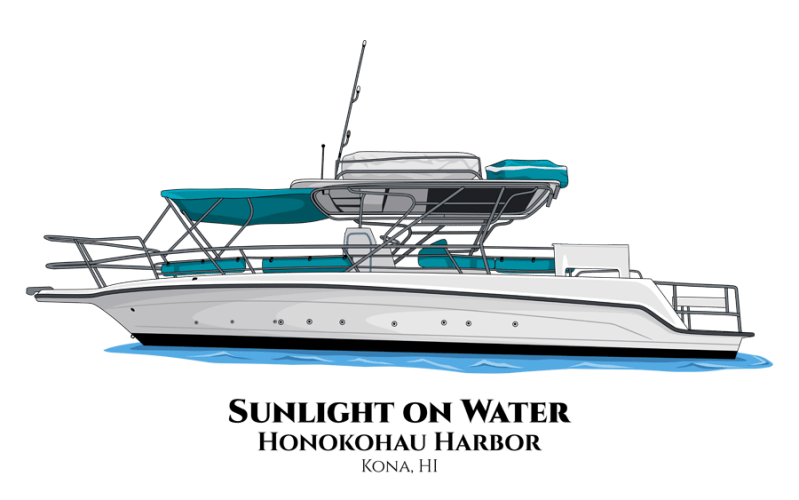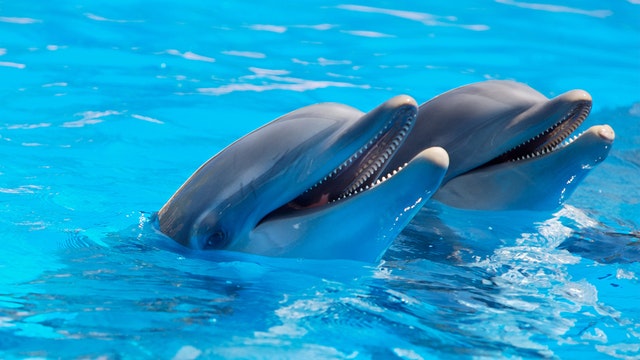A dolphin encounter in Kona is often described as a once-in-a-lifetime experience that will leave you with lasting memories. Dolphins are among the most beautiful animals on earth and they are such friendly creatures!
The Hawaiian word for dolphin is “Nai’a.” It refers to any dolphin species present in Hawaiian seas, which can include any of the four species listed below:
- The bottlenose dolphin of the Pacific.
- The rough-toothed dolphin is a type of dolphin that has a lot of teeth.
- The spotted dolphin is a type of dolphin that can be found in the ocean.
- The spinner dolphin.
Spinner dolphins are the smallest and most regularly observed of the four dolphins in Hawai’i. The playful pacific bottlenose dolphins are well-known for their appearances in aquariums all around the world.
What makes a dolphin encounter in Kona so remarkable?
There are several reasons why dolphin encounter in Kona is described as a once-in-a-lifetime experience. These creatures are unique and they exhibit certain behaviors, unlike many other animals. The following are reasons why dolphin encounter in Kona is always exciting:

- Dolphins are very sociable creatures. They live in groups and work together to obtain food and raise kids (calves).
- Dolphins are playful and inquisitive creatures. They battle and play with one another as well as with seaweed. They’ve also been known to play with dogs and other animals.
- Dolphins sleep by alternating between resting one side of the brain at a time. This permits them to keep rising to the top for breath while keeping an eye out for predators.
- Dolphins are highly intelligent animals who also exhibit culture, which was previously thought to be unique to humans.
- Dolphins have been seen teaching their offspring how to use tools. To protect their snouts while foraging, they use sponges to cover them.
- Dolphins are benevolent creatures. They have a reputation for staying with injured people and even assisting them to the surface to breathe. Their compassion extends across species boundaries as well. There have been numerous reports of dolphins assisting humans and even whales.
- Dolphins communicate in a variety of ways that are highly evolved. They have a “signature whistle” that identifies them to others.
Where are the best places for a dolphin encounter in Kona?
During the day, spinner dolphins in Hawaii relax in shallow, sandy-bottom coves around the Kona Coast of the Big Island. These bays offer refuge from predators in deeper seas while remaining near to the off-shore feeding grounds where dolphins spend the night.
The Kona and Kohala coasts are some of the best places for a dolphin encounter in Kona. The weather on this part of the island is pleasant all year, so bring sunscreen. A dolphin encounter in Kona has also been reported in the bay from Alii Drive in downtown Kona.
Spinner dolphins are nocturnal species with four well-known resting areas where they congregate and relax during the day. These are some of the best places for a dolphin encounter in Kona:
- Makako Bay, located north of Kona and adjacent to the Kona International Airport
- Honaunau Bay (south of Kona, one of the greatest snorkeling places on the island)
- Kealakekua Bay (south of Kona, one of the best snorkeling spots on the island)
- Kauhako Bay, 23 miles south of Kona, just above the Ho’okena beach park and campsite, is another fantastic snorkeling destination, right near the fascinating Pu’uhonua o Honaunau National Park.
What is the best way to see dolphins on the island?
We believe that the greatest method to observe dolphins when visiting Hawai’i is to go on a snorkeling cruise to a location where sightings are (often) assured along the way, such as Kealakekua Bay.
Dolphin snorkeling tours
You might see dolphins on your own while enjoying one of the many ocean activities on the Kona (Western) coast, but if you want to enhance your chances of seeing them, you should schedule a dolphin watch and snorkeling excursion. These cruises visit well-known dolphin resting areas, always guaranteeing sightings from the comfort and safety of a boat.



